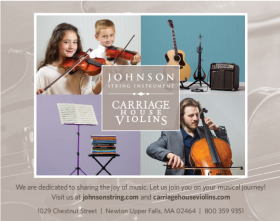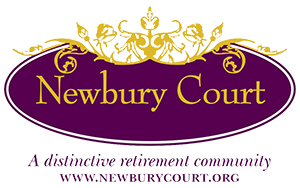Search
Saturday, December 8, 2012, Emmanuel Church, Boston
Sunday, December 9, 2012, First Unitarian Church, Worcester
Concerto Noël Allemand ............ Michel Corrette (1709-1795)
Allegro • Adagio • Allegro
Il Gennarò [January ............ Gregor Joseph Werner (1693-1766)
Allegro Il capo d’Anno dissengnando il freddo con la cronologia
[The start of the year depicting the cold, with chronology]
Adagio–Presto
Allegro La buona speranza d’un anno felice [Good hope for a felicitous year]
Menuet
Allegro Il villano fantastico [The crazy farmer]
Süsser Trost, mein Jesus kömmt, from Cantata BWV 151 ............ Johann Sebastian Bach (1685-1750)
Flößt, mein Heiland, Flößt dein Namen, from Christmas Oratorio BWV 248 ............ Bach
Intermission
Pastorale in D Major ............ Gregor Joseph Werner
Larghetto—Allegretto
Adagio
Passato
Ich bleibe Gott getreu ............ Christoph Graupner (1683-1760)
Kristen Watson, soprano
Suzanne Stumpf, traverso; Sarah Darling and Jesse Irons, violins
Marcia Cassidy, viola; Daniel Ryan, cello; Michael Bahmann, harpsichord
Program Notes
In the German-speaking countries of Baroque Europe, there was a tremendous wealth and variety of music composed for the feast of Christmas and the related seasons of Advent and Epiphany. These works run the gamut from cantatas and oratorios composed for large public worship services, to cantatas, arias, and instrumental works written for smaller-scale liturgical and domestic observances. This program presents a sampling of intimate vocal and instrumental works for the season in a variety of musical styles and settings.
Our concert opens with a work by a French Baroque composer based on a German chorale. Michel Corrette was an important proponent of the concerto in France and wrote dozens of works in the genre for many instrumental combinations. Several of his instrumental works feature noël settings, often with melodies drawn from foreign sources. His Concerto Noël Allemand is based on the German chorale Lobt Gott Ihr Christen allzugleich (Praise God, you Christians, all together) and is cast as a series of inventive variations on the tune.
Gregor Joseph Werner was an organist and composer who served as Kapellmeister of the Esterházy court when the young Joseph Haydn was hired in 1761. Although relations between the two were strained during that time, Haydn paid homage to the older composer in 1804 by arranging some of his fugues for string quartet. Though principally a composer of church music and oratorios, Werner also composed symphonies and trio sonatas in which representational effects are used. His Neuer und sehr curios Musicalischer Instrumental-Calendar, published in 1748, consists of twelve suites, each representing a month of the year. The suite Il Gennarò [January] opens the collection. Its first movement depicts the chill of that frosty month, then after a brief Adagio commences a fugue that contains numerical representation for the year 1748 (one of many almanac-like elements found in this collection).
Werner also wrote several rustic Pastorales for the Christmas season. In Austria and central Europe, Christmas musical traditions were infused with rustic, folkloric styles. Werner’s Pastorale contains generous doses of florid melodies in thirds accompanied by droning pedal points that colorfully depict a boisterous, rustic peasant band.
As part of his many duties as Kantor at the principal churches in Leipzig, J. S. Bach wrote several liturgical cycles of cantatas. One can only wonder at the amount of work required to compose, rehearse, and perform the music required for the principal feasts of the liturgical calendar. In the Lutheran Liturgy, Christmas celebrations were multi-day affairs, with several distinct feasts spanning from Christmas Day through Epiphany. Bach’s Cantata 151, written for the third day of Christmas, is an intimate work employing modest forces. Its opening aria is of a gentle character, in a rocking meter reminiscent of a lullaby. The text features themes of comfort and joy that are brought out in contrasting musical sections. The first part of the aria features florid figuration in the flute part which weaves around the simpler, cantabile soprano melody. In the sprightlier second section, the flute and soprano engage in a joyful, animated musical dialogue.
What is now referred to as Bach’s Christmas Oratorio is actually a compilation of cantatas written for each of these feast days. Part Four of the Christmas Oratorio is a cantata written for the Feast of the Circumcision and contains the memorable echo aria Flößt, mein Heiland, Flößt dein Namen. One of the main themes of this feast is the naming of the child Jesus, and in this aria the supplicant asks whether the Name should inspire a bit of terror, or rejoicing. The “no” and “yes” responses form the basis for the charming echo effects in this aria.
Christoph Graupner was another prolific composer of cantatas. Graupner’s early musical training included studies at the Thomasschule in Leipzig under Johann Schelle and Johann Kuhnau. He later composed for and performed at the Hamburg opera and in 1712 become Kapellmeister at the court of Darmstadt. It was there that he wrote the majority of his works, including over 1,000 cantatas and hundreds of instrumental compositions. His cantata Ich bleibe Gott getreu was composed in 1719 for the Feast of St. Stephen which, in the liturgical calendar, falls on December 26. This feast commemorates the Christian church’s first martyr. The text Graupner chose for his cantata (by J. Conrad Lichtenberg) takes the listener to a darker place, in stark contrast to the pastoral themes of the rest of the Christmas season. Here, the listener is exhorted to stand firm in faith against the wiles of Satan. In the second aria Tobt, ihr Feinde, immerfort, the rhythmic figure set to the word immerfort [constantly] becomes an incessant, taunting leitmotif. A striking section of the cantata is the central arioso that contains a series of unusual, rapid modulations, perhaps depicting the transformation of the “stones of martyrdom” to “diamonds adorning our crown of glory.” (It is noteworthy that the Greek derivation of the name Stephen is crown.) The work ends with a transformative, hymn-like aria.
© Daniel Ryan and Suzanne Stumpf











Daniel Ryan and Suzanne Stumpf, Artistic Directors
349 Boston Post Road, Weston, MA 02493
tel. (781) 466-6694
All content © Musicians of the Old Post Road
Privacy Policy
Terms & Conditions
